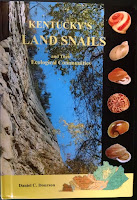April 24-26, 2015
Crustose Lichens
Dr. Lendemer is one of but a handful of professional lichenologists working in the United States. His voluminous knowledge of all things lichen is awe inspiring and humbling. His casual demeanor belies his world authority status and his ocean-deep knowledge of lichens. After spending the weekend with James I can only say that he is pure genius. He had an eager audience for the workshop with everyone-who-is-anyone doing work on lichens in Ohio attending the workshop. Ray Showman, co-author of The Macrolichens of Ohio attended along with founding members of The Ohio Moss & Lichen Association, folks from the USDA Forest Service and beyond. A great group that managed to produce the most inclusive voucher collection of crustose lichens for the preserve to date. A few interesting highlight species found were Xyleborus sporodochifer which was recently described from The Ozarks and the Dolly Parton lichen Japewiella dollypartoniana. Recently named by Dr. Lendemer to honor Dolly Parton's work to conserve the Appalachians.
 |
| Dr. Lendemer (right) viewing crustose lichens on a tree |
 |
| Dr. Lendemer (left) with students looking for Zyleborus sporodochifer. |
Saturday, June 20, 2015
Ohio’s Rubus
Mark Widrlechner is the undisputed King of Rubus. He is one of the few people in the United States considered an expert in this difficult genus. For those unaware, the Rubus genus includes the blackberries, raspberries and dewberries, to name a few. It is a difficult group to identify specimens to species with much work still to be done with genetics and subsequent taxonomy. Dr. Widrlechner took us through the finer points of identifying this group and the participants prepared voucher specimens that are now housed in the museum's herbarium at The Edge.
 |
| A specimen produced at the workshop and now in the preserve's herbarium. |
June 26-28, 2015
Bobcats & The
Art of Remote Monitoring
Dr. Suzie Prange, Wildlife Research Biologist, ODNR
Division of Wildlife
Tim Prange, Environmental Educator, Rural Action
Eric Householder, Wildlife Technician, USDA, APHIS
Wildlife Services
Laura & David Hughes, avid remote monitoring
practitionersThis workshop marked the first attempt to document the presence of bobcats on the preserve with remote cameras. The instructor team was a powerhouse of the best in their fields at working with these elusive cats. The team was led by Dr. Susie Prange who has been doing groundbreaking work on bobcats in Ohio. The team's efforts paid off with simply amazing videos of bobcats that were captured not a hundred yards from our education center. Several videos were taken at sites frequented by endangered Allegheny woodrats begging the question whether or not bobcats are actively hunting these rare rodents? A special thanks goes out to Laura and David Hughes who not only taught at the workshop but set many of the camera traps that captured the most amazing bobcat footage. Their innate sense of where animals frequent coupled with their penchant for detail and artistic flair made all the difference in the film that was captured. A sample of what they can do:
Video from Laura & David Hughes
July 24-26, 2015
Bumble Bees & Pollination Ecology
Mike Arduser, Retired Biologist, Missouri Department of Conservation
Five species of living bumble bee were identified during the workshop with the balance of Ohio bumble bee species identified through collections brought by Mike Arduser. Mike is a recently retired conservation biologist with a deep background in bee work. His bee work with The Nature Conservancy and other organizations is well respected. Would you like to learn more from this incredible instructor? Don't miss the Bees of the Midwest identification workshop taught by Mike Arduser at The Edge March 14-18,2016. Here's the link to register.
 |
| Mike Arduser (left) catching bumble bees with net in Lynx Prairie |
 |
| Male Bombus impatiens with swamp milkweed pollinia (orange) attached to its feet. |
September 18-20, 2015
Stoneflies
Dr. R. Edward Dewalt, Aquatic Entomologist, Illinois
Natural History Survey
Dr. Scott A. Grubbs, Associate
Professor, Western Kentucky University
Two of the greatest minds working on Plecoptera visited The Edge this summer to offer the most comprehensive stonefly identification workshop ever to be held in Ohio. Dr. Grubbs and DeWalt are leading scientists in researching stonefly distribution, both past and present, and what impacts global warming may have on these cold water loving specialists. Participants identified stonefly specimens from around the country that Ed and Scott brought along and some participants brought their own material to resolve long-nagging difficult identifications. Many stream biologists attended, including folks from the U.S. and Ohio EPAs, OSU and others to take part is this special training session.
Two of the greatest minds working on Plecoptera visited The Edge this summer to offer the most comprehensive stonefly identification workshop ever to be held in Ohio. Dr. Grubbs and DeWalt are leading scientists in researching stonefly distribution, both past and present, and what impacts global warming may have on these cold water loving specialists. Participants identified stonefly specimens from around the country that Ed and Scott brought along and some participants brought their own material to resolve long-nagging difficult identifications. Many stream biologists attended, including folks from the U.S. and Ohio EPAs, OSU and others to take part is this special training session.
 |
| Dan Dourson teaching the finer points of slug identification.. |
















